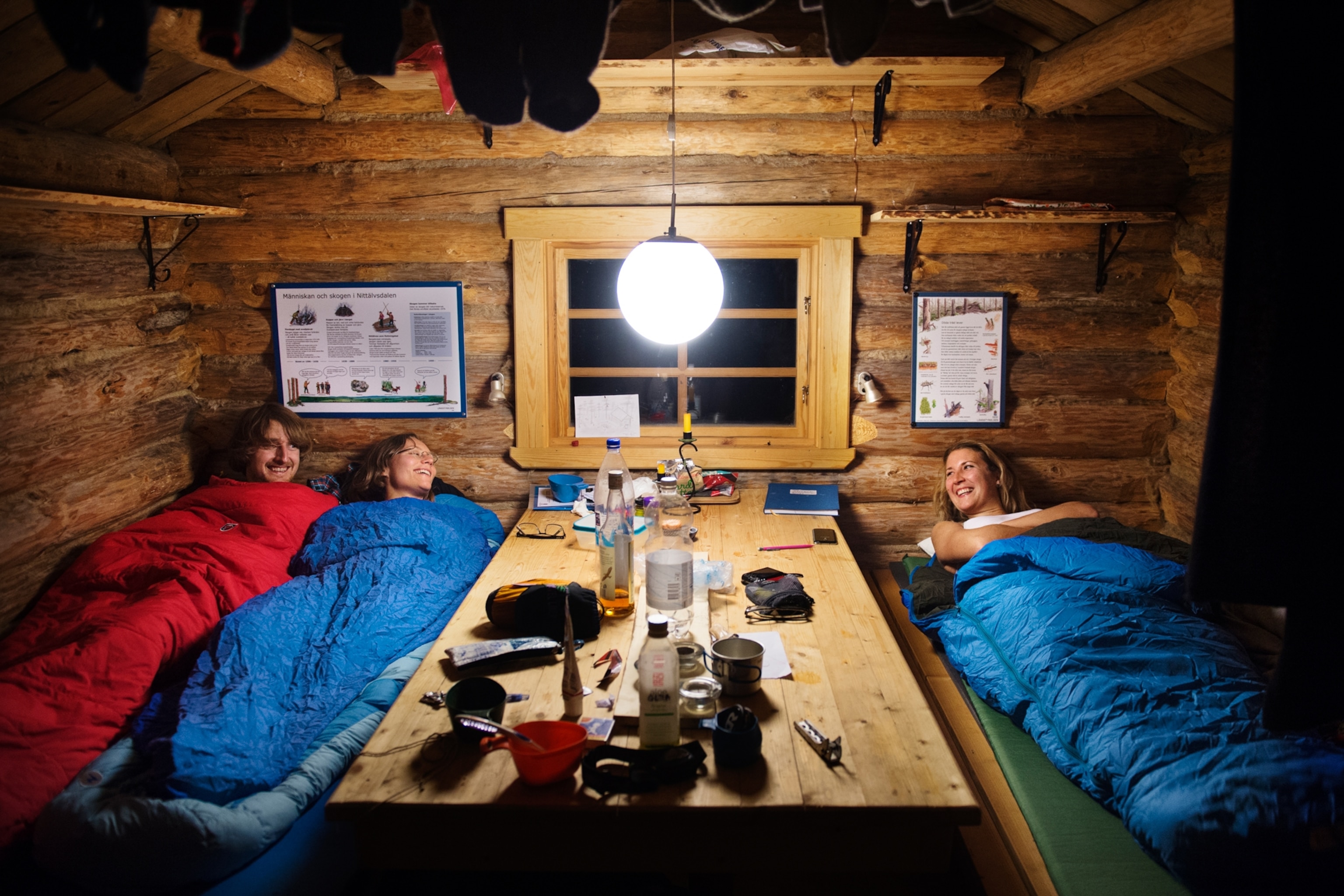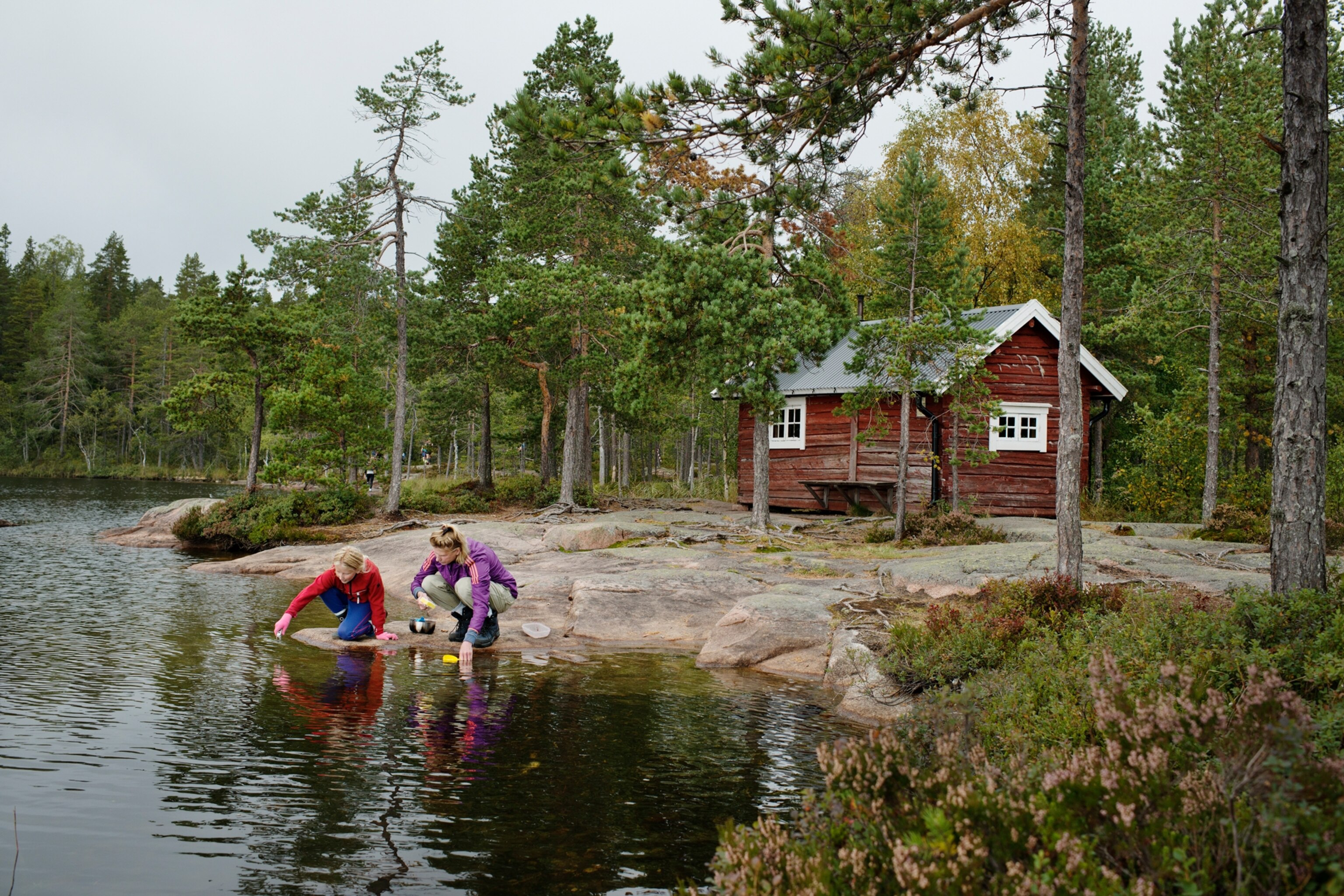
At these free cabins, Sweden goes wild
An informal network of cottages, bunkhouses, and hiking shacks provides an offbeat, outdoorsy way to explore the Nordic nation.
Visit Sweden, and you have the right to walk, bicycle, ski, and camp anywhere with the exception of private gardens, yards, or farmland. Known as allemansrätten, or the right of public access, it’s an integral part of the country’s culture.
Besides this open invitation to pitch a tent, many wilderness areas and parks also hold cabins that are free for anyone to stay in. Some are former hunting lodges or fishing shacks, others are onetime country homes donated to governments and municipalities.
There are more than 250 of them, ranging from primitive to somewhat plush. Swedish photographer Moa Karlberg captured dozens of them in the book, Stuglandet (“the country of cabins”), which she coproduced with writer Kjell Vowles.

“I got to know about the culture and history of places in Sweden that weren’t touristy hotspots,” says Karlberg. “We saw lots of forest and lots of lakes.” Their photos and text depict dwellings and dreamy scenery in regions including starkly beautiful Lapland and Gävleborg on the Baltic Sea.
There’s a 19th-century cabin with groovy blue and white peacock wallpaper and woolly rugs in Gotaland and tiny red cabins, their warm, wooden interiors lined with cozy bunkbeds, scattered throughout the countryside. “I like being in nature, but I’m not a hardcore wild camper,” says Karlberg. ”In these cabins, you can enjoy the simple life, but it’s much more convenient than a tent. You can be inside if it rains.”


Many of her photos depict the magic of spending time with other wanderers in the wild: families with fleece-bundled kids hiking in the woods, friends gathered around a rustic table drinking coffee. ”You meet a lot of people when you visit these cabins, since they can’t be reserved and they are open to anyone,” says Karlberg.
Vowles started the project hoping to reveal both lesser-known regions of Sweden and to publicize these free cabins, which aren’t well documented. He and Karlberg first published the guidebook in 2017; it was updated and expanded in 2021.
(Learn how hiking huts can help you explore New Zealand.)
“Some people in Sweden have old family cabins, but not everyone knows about these other places to stay,” says Vowles. The book (in Swedish only) gives detailed information and maps on where the dwellings are; travelers can also find many of the cabins via the website Naturkartan.
The book, and the pandemic push to explore the outdoors, have made some of the cabins better known. There are even travelers who make pilgrimages to multiple properties in a year, racking up numerous overnights in bunk beds and fireside chats with strangers.
(Learn how to explore Scandinavia’s indigenous Sápmi culture.)
Take Erika Åhlund and her partner, Christer Moberg, who bought the Stuglandet guide in 2017. “Since then, we’ve stayed in 48 of these open cabins,” says Åhlund. “The cottages give us relaxation from everyday life in the city and our apartment.”
All of the cabins have wood-burning stoves, meaning cottage collectors like them can visit in the spring to kayak and forage for berries or in the winter for cross-country skiing. You just need to bring food and a sleeping bag before checking in.
“Swedes have such a close connection to the forest, and this is another way to explore it,” says Vowles.






You May Also Like
Go Further
Animals
- Fireflies are nature’s light show at this West Virginia state parkFireflies are nature’s light show at this West Virginia state park
- These are the weird reasons octopuses change shape and colorThese are the weird reasons octopuses change shape and color
- Why young scientists want you to care about 'scary' speciesWhy young scientists want you to care about 'scary' species
- What rising temperatures in the Gulf of Maine mean for wildlifeWhat rising temperatures in the Gulf of Maine mean for wildlife
- He’s called ‘omacha,’ a dolphin that transforms into a man. Why?He’s called ‘omacha,’ a dolphin that transforms into a man. Why?
Environment
- What rising temperatures in the Gulf of Maine mean for wildlifeWhat rising temperatures in the Gulf of Maine mean for wildlife
- He’s called ‘omacha,’ a dolphin that transforms into a man. Why?He’s called ‘omacha,’ a dolphin that transforms into a man. Why?
- The northernmost flower living at the top of the worldThe northernmost flower living at the top of the world
- This beautiful floating flower is wreaking havoc on NigeriaThis beautiful floating flower is wreaking havoc on Nigeria
- What the Aral Sea might teach us about life after disasterWhat the Aral Sea might teach us about life after disaster
History & Culture
- Scientists find evidence of ancient waterway beside Egypt’s pyramidsScientists find evidence of ancient waterway beside Egypt’s pyramids
- This thriving society vanished into thin air. What happened?This thriving society vanished into thin air. What happened?
Science
- Why pickleball is so good for your body and your mindWhy pickleball is so good for your body and your mind
- Extreme heat can be deadly – here’s how to know if you’re at riskExtreme heat can be deadly – here’s how to know if you’re at risk
- Why dopamine drives you to do hard things—even without a rewardWhy dopamine drives you to do hard things—even without a reward
- What will astronauts use to drive across the Moon?What will astronauts use to drive across the Moon?
- Oral contraceptives may help lower the risk of sports injuriesOral contraceptives may help lower the risk of sports injuries
- How stressed are you? Answer these 10 questions to find out.
- Science
How stressed are you? Answer these 10 questions to find out.
Travel
- A guide to Philadelphia, the US city stepping out of NYC's shadowA guide to Philadelphia, the US city stepping out of NYC's shadow
- How to make perfect pierogi, Poland's famous dumplingsHow to make perfect pierogi, Poland's famous dumplings
- The best long-distance Alpine hike you've never heard ofThe best long-distance Alpine hike you've never heard of
- Fireflies are nature’s light show at this West Virginia state parkFireflies are nature’s light show at this West Virginia state park
- How to explore the highlights of Italy's dazzling Lake ComoHow to explore the highlights of Italy's dazzling Lake Como
- Going on a cruise? Here’s how to stay healthy onboardGoing on a cruise? Here’s how to stay healthy onboard




